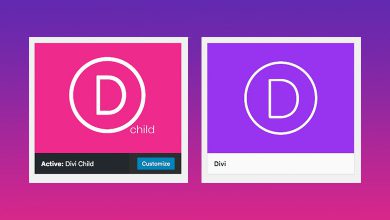Best Strategies for Scaling Web Applications

Web platforms are a popular way for businesses to present their products and services to consumers; thus, there are several strategies that can be implemented to expand web platforms.
The growth of web platforms is essential for maintaining productivity and ensuring that your platform can accommodate more traffic and growing users’ demands. In organizations, there is a demand for robust and scalable structures that are suitable for the expansion of complex processes that require high speeds, security, and quality.
This article contains some of the most effective strategies for scaling web applications and how developers and teams can prepare for conditions that are in high demand.
Best Strategies for Scaling Web Apps
So, I have listed some of the essential strategies for scaling your web apps.
1. The Difference Between Transverse Scaling and Vertical Scaling
When deciding how to expand a web platform, one of the primary decisions is whether to use side-to-side scaling, upright scaling, or both.
- Side to side Scaling: This can involve increasing the number of servers, or occurrences, to help circulate the load. The larger the number of servers, different machines are used to handle the traffic. Thus preventing any one server from being loaded. Swinging side to side scaling is generally more efficient and less expensive in the long run especially when addressing large scale platforms.
- Upright Scaling: Upright scaling enhances the limit of a single server by incorporating extra resources such as CPU, RAM or storage capacity. Although it is easier to implement at this level, this technique is limited due to the hardware necessary to achieve it and may become costly as we advance. It is not as flexible as side to side scaling for the most part.
Generally, side-by-side scaling gets more attention as it can manage larger loads and offer more flexibility. When implementing transportation management solutions, side-by-side scaling becomes especially important. As it allows systems to handle vast datasets efficiently across multiple regions, ensuring faster processing, greater reliability, and improved scalability to meet the demands of a growing business.

2. Actualize Load Balancing
Load balancing is distributing traffic among different servers and ensuring all are manageable. A load balancer works like a traffic officer, directing workload to the correct server depending on the limit or availability. Normal kinds of load balancers include:
- Hardware Load Balancers: These are real gadgets that manage traffic flow, but they cost a lot of money.
- Software Load Balancers: Some tools that help distribute traffic effectively include NGINX, HAProxy, and AWS Elastic Load Balancer. They are more cost-effective and flexible and particularly useful for cloud computing models.
Load balancing enhances the availability and reliability of the web based systems, thereby reducing downtime caused by overloaded servers.
3. Use a Content Delivery Network
A content delivery network is one of the strategies for scaling web applications. A Content Delivery Network (CDN) is a system of servers located geographically in different parts of the world to distribute content to the clients from a server nearest to them. CDNs help in reducing inertia and focus on the platform delivery, especially to customers located away from your originating server.
CDNs cache static assets such as images, CSS, JS files, and media. This is because by shifting these demands to the CDN you reduce the burden on your web servers and at the same time increase the speeds at which your content gets delivered. Some of the well-known CDNs are Cloudflare, Amazon CloudFront, and Akamai.
Running a CDN enhances the client experience while also reducing the burden on your backend infrastructure. It makes it easier to scale your web platform.
4. Upgrade Your Database
When you have a large platform, the execution of databases can be an issue that slows down progress. Opting to improve your database for scalability ensures that it can handle increasing volumes of information and more complex queries.
i) Database Sharding:
Sharding divides a database into smaller, more affordable portions, each of which can be served on separate servers. This helps to circulate the load and prevent one database case from being overwhelmed. Sharding is often highlighted as a key strategy for handling large-scale data in a transportation management software development guide. It has optimal performance and scalability across different geographic locations.
ii) File indexing:
Properly naming your database tables helps improve the performance of your questions. A good list system ensures that your database is capable of quickly retrieving information whenever needed as the list expands.
iii) Storing in memory:
Optimize in-memory data structures such as Redis or Memcached to store as frequently as possible information in memory. This reduces the need to challenge the database for each solicitation, or in effect, the technique manages reaction times and cuts down the database workload.
Choosing proper database improvement methods can greatly influence expandability and performance increase.
Read Also: Challenges and Opportunities in Web3 App Development
5. Use Microservices Design
Applications built with monolithic architecture have tightly coupled components, which makes it difficult to scale them. One of the problems is that as the platform grows larger, adding new highlights or scaling individual parts is challenging. Microservices design addresses this problem by breaking the application down into more limited and self-contained services that can be scaled.
In this architecture, every microservice is independent and operates individually and it interacts with other services through APIs. This methodology allows you to scale only the specific features that require such treatment instead of the entire application. For example, if there is increased traffic in the client confirmation service, it is possible to scale up only that service without a problem.
Microservices also apply to the advancement speed and sending flexibility, allowing for improvements and new features to be released without much hassle.
6. Auto-Scaling in Cloud Situations
Many cloud specialist co-ops, including AWS, Google Cloud, and Microsoft Azure, have auto-scaling features that automatically adjust your server capacity based on demand. Auto-scaling ensures your application has adequate resources during peak hours and that the necessary resources are spent when traffic is low. It is an effective approach for scaling web applications.
Auto-scaling is based upon metrics similar to processing occupancy, memory or request rates. When the load exceeds a predetermined limit, the new instances are triggered automatically. When traffic subsides to normalcy, the extra examples are shut down.
This procedure offers versatility and efficiency, which ensures that your application can handle network traffic without intervention.
Concluding Thoughts
Growing web platforms remains the core approach to maintaining high performance as the number of clients increases. The procedures include even scaling, load balancing, database improvement, microservices design, and auto-scaling to ensure that your platform is capable of handling increased traffic.
Furthermore, by using a CDN, employing decoupled services, and refactoring the code, expandability will be further upgraded. Effectively following these procedures for scaling web applications ensures that your web platform remains fast, reliable, and optimized even as it scales.




